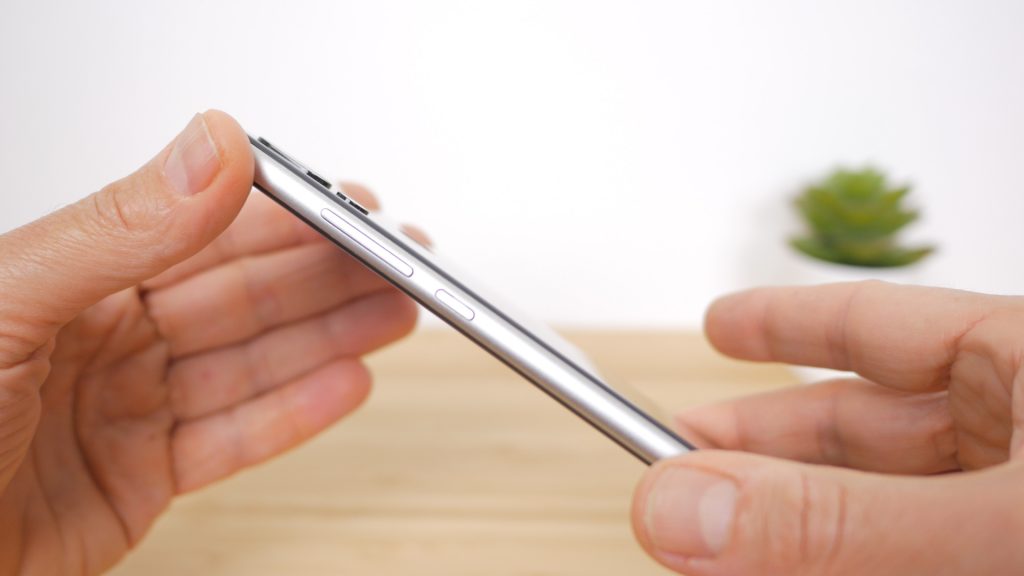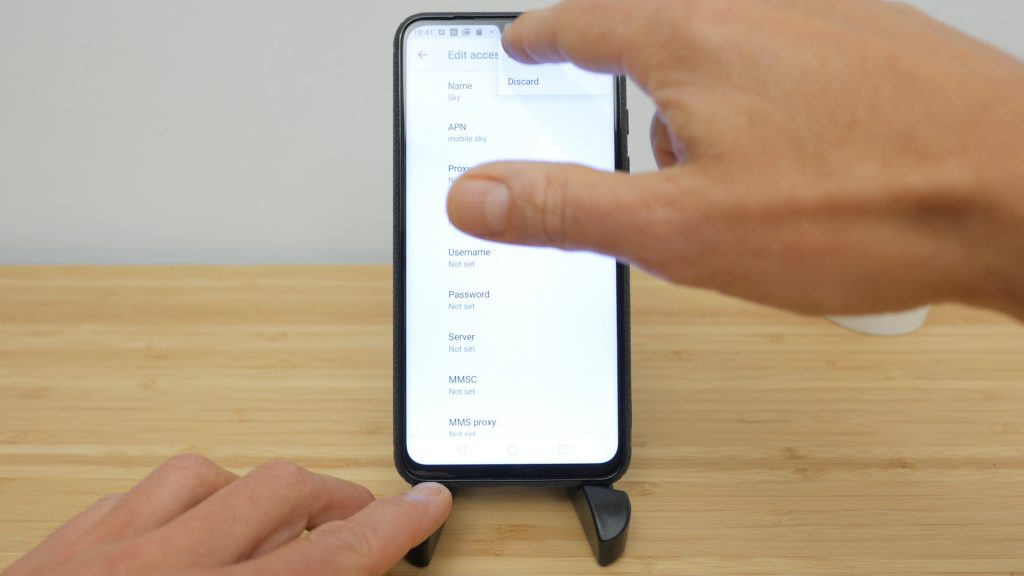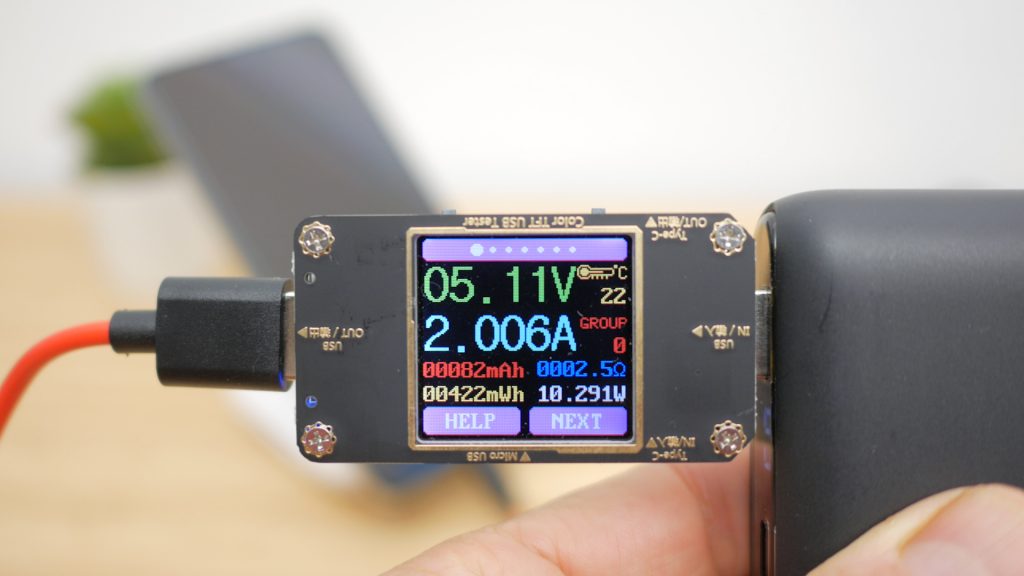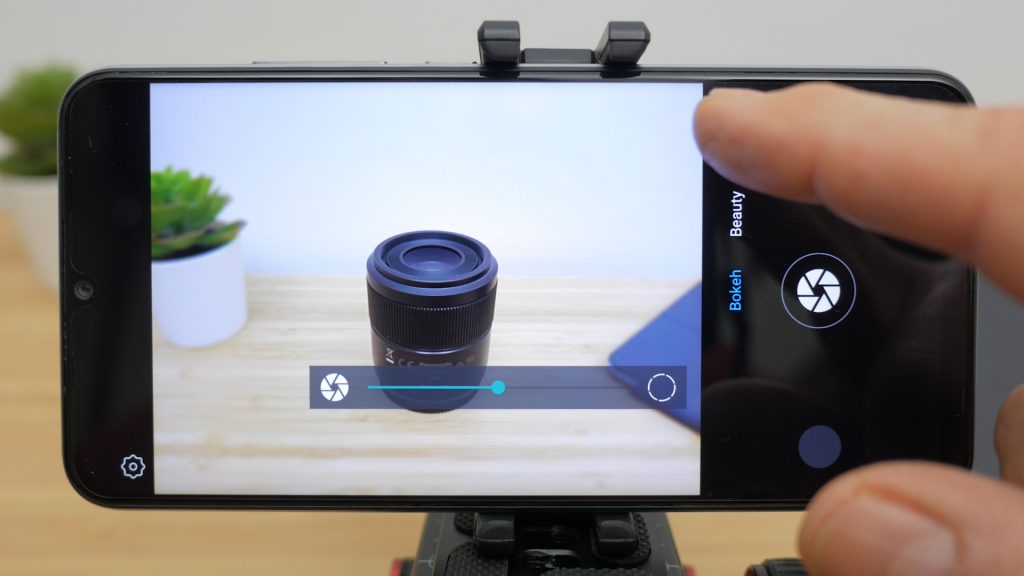The Umidigi A5 Pro costs less than £100 or $100 but has an ultra-wide triple camera system, a 6.3” edge-to-edge full HD screen, an 8-core processor, Android 9.0 and a claimed two days of battery life.
It almost sounds too good to be true? Let’s take a closer look.
Overview

The phone comes smartly packaged considering its budget price. Inside the box you get a branded red micro-USB cable and a compact 2A wall charger. There’s also a SIM eject tool and a brief user manual.

The phone itself comes in either space grey or crystal blue and is already fitted in a grippy case and with a plastic screen protector perfectly installed. The case feels ok attached, but it’s very flimsy when you remove it – so I’m not sure how long it’ll fit so snugly. Still, you’d generally need to spend at least another £10 or $10 to get a case and screen protector, and you’d have to install the protector yourself.
You will at least need to take the case off to remove the protective film on the back and front of the phone, and I was pleasantly surprised at the build quality which would be impressive if the phone cost over twice as much. It has a glass back which houses the triple camera, a dual LED flash and the fingerprint sensor.

The aluminium band has the power button and volume controls around one side, the dual nano SIM and microSD tray around the other side, and a 3.5mm headphone jack, microphone, micro-USB port and speaker along the bottom. It’s nice to see a headphone jack but I would have liked the more modern and robust USB-C port, rather than micro-USB, like other phones in Umidigi’s range. Still it’s excusable at this price.

It’s not overly heavy considering its build quality and size at 205g and it measures 156mm by 76mm and 8mm thick, all without the case. There’s no IPX rating so you’ll need to be careful getting it wet.

You’ll need to insert a nano SIM to get started, and an optional microSD card up to 256GB in capacity to expand the phones included 32GB of storage. The phone actually supports two SIM cards which you can set up later in SIM card settings.

A long press of the power button turns the phone on and reveals the 6.3” display with its 19:9 aspect ratio and waterdrop notch for the front facing camera. The LTPS panel fills the glass almost to the edge with a slightly larger reveal at the bottom. The display makes even the latest iPhone design, with its larger notch and very slightly bigger bezel start to look a little dated!

Setup is straightforward. Connect to your wireless network, wait while it discovers if there are any updates, enter your Gmail account or create a new one, and setup fingerprint unlock. You’ll be greeted by a stock Android 9.0 home page. This is one of my favorite features of the phone. There is no additional cluttered user interface like many other phones. All your default apps are the standard Google ones, that I mainly use anyway. It makes for a very slick initial experience. The only thing I had to change, was umidigi.com set as the default Chrome homepage. There are a few additional apps, most notably there is an FM radio app for the built in radio tuner which works surprisingly well so long as you have some headphones to plug in as the antenna.
All your default apps are the standard Google ones, that I mainly use anyway. It makes for a very slick initial experience. The only thing I had to change, was umidigi.com set as the default Chrome homepage. There are a few additional apps, most notably there is an FM radio app for the built in radio tuner which works surprisingly well so long as you have some headphones to plug in as the antenna.

It’s likely your network operator won’t recognise the phone, so might not be able to automatically configure the mobile data settings. For Sky Mobile I had to go into Settings | Network & Internet | Mobile network | Advanced and add the Access Point Name details manually.

By default there are virtual keys along the bottom of the screen. I turned this off in Settings | Buttons thus enabling gestures which I’ll discuss further shortly.
Performance

The A5 Pro has a Mediatek Helio P23 8-core processor and 4GB of RAM. Whilst not the fastest processor around, the phone feels pretty nippy most of the time, helped along by the decent amount of memory. There is some occasional stuttering, and it’s nowhere near as fluid as my iPhone X. I tried Mario Kart which was playable but not the smoothest experience.

I found fingerprint unlock pretty quick, and with the convenient position of the sensor on the back of the phone a short tap turns on and unlocks the phone within a split second. I also tried Face unlock which also worked fine for me in most situations.


Gestures allow for even more screen space and whilst not as smooth as on the iPhone say, they work quite well once you get used to them. Swiping up from the bottom left goes back, swiping up from the bottom middle returns to the home page and swiping up from the bottom right brings up the app switcher.

It did score a lowly single core score of 157 and multi-core score of 769 in the Geekbench 5 benchmark, compared to 931 and 2587 for the now two year old iPhone X. But most of the time and for general use it’s fine, especially considering its budget price.

I did get the occasional crash with a few of the system apps which was a little concerning, but hopefully they’ll be fixed in a future update.

The display is definitely one of the phone’s strongest points. It’s pretty bright and its 2280 x 1080 400ppi, resolution makes it very sharp. Browsing the internet, looking through photos and watching YouTube is a real pleasure. Outside, especially using the camera, it could do with being a bit brighter, but it’s still usable. By default, adaptive brightness isn’t on but it is supported. You can turn it on under Settings | Display | Adaptive Brightness.
The speaker is quite loud, but sounds harsh with little bass. It’s not particularly comfortable listening to it at higher volumes. There aren’t earphones included, but I’d recommend investing in some.
In the video (at the top of the page), I recorded a sound test with my binaural microphones for 3D stereo sound. Listen with headphones for the best experience.

Phone call quality was acceptable, but both ends of the call sound quite hollow.

It’s nice to see a 2A or 10W charger included, and the phone’s sizeable 4150mAh battery needs it! Other phones in Umidigi’s range like the S3 Pro and the Power that use USB-C support true fast charging up to an even faster 18W.

Still the battery is 50% bigger than my iPhone X’s 2700mAh battery and it lasted well over a day of heavy use. And the phone charged at the full 2A right up to about 80% before dropping slightly, with a full charge taking under three hours.

When it comes to connectivity, the A5 Pro’s budget credentials become evident. Although I doubt it’ll make much difference to most of us. The phone only has WiFi 802.11n, not the latest faster ac version but speed and reliability was fine to my Sky 802.11ac router. And there’s Bluetooth 4.2 – not the latest 5.0, but I didn’t have any issues connecting to various Bluetooth speakers and earphones. Finally there’s no NFC support for quick pairing with compatible devices, something again other models in Umidigi’s range have.
Cameras and camera app

As well as the screen, the triple camera is one of the phone’s big attractions. The primary camera uses is a F1.8 16MP either Sony or Samsung sensor, with a 28mm equivalent focal length. Above it there’s a 5MP depth sensor for portrait shots with background blur and below there’s the rather interesting 8MP ultra-wide 120 degree lens – similar to the new iPhone 11’s. There’s also a 16MP F2.0 front facing camera.

The included camera app works pretty well and has a clean lay out. You can switch from the default primary lens to the wide angle view, or the front facing camera. If you swipe right a couple of times you get to the Bokeh mode which uses the depth sensor together with the standard lens for portrait shots, with an adjustable amount of background blur.

Swiping left from the default picture mode takes you to Video where you can capture at a maximum of 1080p with the primary, ultra wide and front facing camera at 30fps apart from the ultra-wide camera which appears to capture at 24fps.
In many of the camera test shots I compared the A5 Pro to an iPhone X which still has a very good camera for a smartphone. Hopefully this will provide some form of benchmark. Please take a look at the video for the comparisons.

The picture quality in sunny conditions was pretty good for both rear cameras, and having the extra wide angle is genuinely useful feature. And the Bokeh mode using the depth sensor did actually produce some half decent results if you don’t look too closely – which is often the case even with my iPhone.

In murky conditions a lot of shots were a little under exposed by default, but you could tweak the exposure levels before taking the shot.
The front facing camera didn’t fare so well – photos came out very soft.


As light levels dropped even a little bit, the photo quality was not so good, as you might expect with a smartphone at this price, with noise becoming quite noticeable, but the results were still generally acceptable. And the cameras don’t do a bad job with white balance in most cases.
The lack of any image stabilisation makes videos look very shaky. The primary camera does auto focus which could be useful, but there’s a lot of focus hunting filming outdoors. To the point I’d recommend holding down your finger on the screen to lock focus and exposure for these types of clips.
The wide angle lens has a fixed focal length, and being wide angle also means most things are in focus anyway. It makes for a fairly useful video camera – if you can keep it steady.
The front camera does a better job for video than it does for photos, and results are acceptable.

I tried other camera apps like Open Camera, but thus far they don’t support the ultra-wide lens.
Overall it’s unlikely you’ll be blown away by the image quality, but taking into account the price of the phone and the flexibility of the triple camera system, it’s still quite appealing.
Conclusions

The Umidigi A5 Pro is a compelling budget smartphone. The build quality, impressive screen, battery life and clean Android 9.0 install justify its asking price.
I wouldn’t purchase this phone for the camera alone, but there’s still no doubt it’s a versatile system and in the right conditions it can deliver good results.
Its performance was generally good ignoring the occasional minor app crash, but phones do slow down gradually over time. And the entry level processor isn’t going to provide a lot of headroom – although the 4GB of RAM will definitely help. I’ll report back in the comments how it’s doing after a few more months of use.
It’s also worth bearing in mind that it’s unlikely you’ll be able to update to the latest Android 10, already available on some devices, but honestly I don’t think that’s a big deal for most people – my Samsung Galaxy Tab is still running Android version 8.
Overall if you’re after a smartphone for under £100, I’d give the Umidigi A5 Pro some serious consideration.
Don’t forget to take a look at my YouTube video at the top of the page, and subscribe to my YouTube channel where I’m releasing videos every week on the latest technology and how to get the most out of it. If you tap the bell icon when you’re subscribe you’ll get a notification as soon as I release a video, and there’ll be a link to my site here for the written article. YouTube is also the best place to leave a comment. I read all of them and respond to as many as I can!
Umidigi A5 Pro: https://amzn.to/31Qchvx
Hello Friend,
Your post is excellent, thanks for that.
I’ve seen lots about the camera issues UMIDIGI has with A5 pro phones. I’ve also seen some campaign to use the GCAM app to get better photos.
I don’t know if you still having the device with you, but if so I would recommend a video/review showing the benefits os using GCAM instead of the Stock CAM.
I am buying a UMIDIGI A5 pro to my daughter and a UMIDIGI F1 to myself, so it will be useful. also for me 🙂
Thanks a lot,
Alex